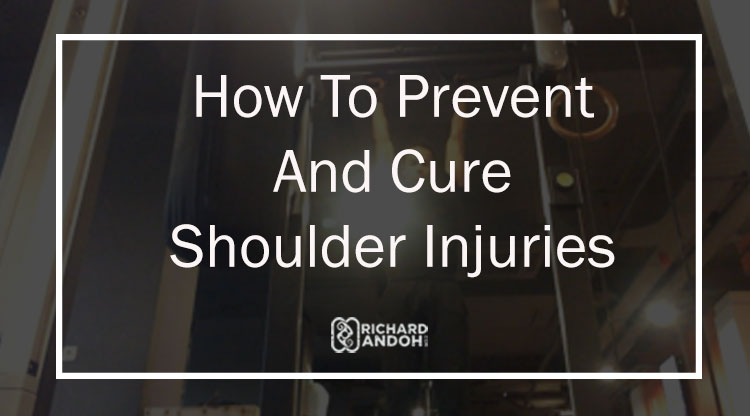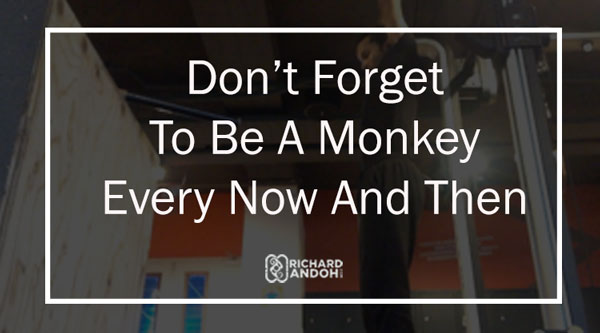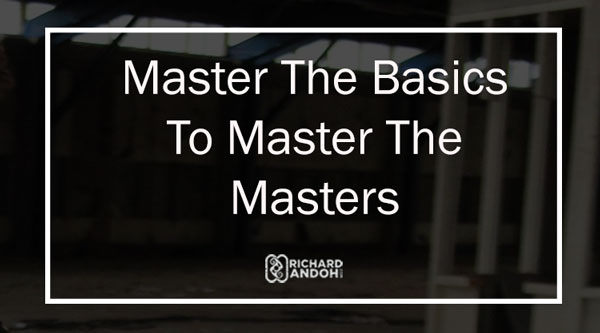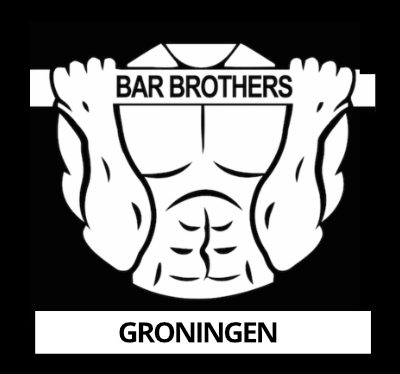Has this happened to you?
You just started doing calisthenics and felt inspired. It didn’t feel like those other things you’ve tried.
This time it felt real.
This time you were really going doing it. BEAST MODE.
Every training brought new surprises. New levels of skill. Mountains of strength.
You surprised even yourself, you never thought you would improve this fast and then…fate decides differently.
As you proceed with your next push up you feel a sharp sting in your shoulder.
INJURY.
Your next training session the same sting and then you realize you need the shoulder you can’t use for almost every single upper body exercises.
Knowing the importance you try it all.
You try resting, you try working out other muscles, you try stretching, you even try some weird alternative Chinese medicine which is said to be made from tiger balls.
But every time you try a push up or any other upper body exercise that sharp pain hits you.
It feels unfair after all the work you’ve put into your progress.
You desperately throw 2 more of those Chinese tiger ball tablets into your glass of water while you ask yourself: “Why me? Why now?”.
Perhaps your workouts are missing something which is the most important thing you can do for your shoulders.
They were designed with a specific goal in mind.
Why Most People Develop Shoulder Injuries And Monkeys Don’t
If you have read through anthropological sources you might have realized that your ancestors were considered ‘aboreal’.
Meaning they did not only have an active life on the ground, but also did a lot of climbing and hanging just like monkeys.
So let me ask you this: When was the last time you climbed up or down a bar or tree like this?
Most people spend weeks, perhaps even years without hanging a single second.
The problem is bigger than hanging too little.
We don’t hang at all.
And while civilization’s progress has gone from spears and rocks to computer chips in a few thousand years.
Your anatomy follows an agonizingly slow, indirect and randomn progress.
It will take millions of years before your shoulder is fully equipped to spend 8 hours in a static position in front of a computer screen.
And because it hasn’t happened yet.
Most of you are paying a high price.
It’s the price you pay for not hanging.
Why Hanging Is Good For Your Shoulder Health, Against Injuries And Will Help You Achieve More Advanced Moves
It might seem too easy to be true.
Just hang and develop healthy and strong shoulders.
Sometimes it’s hard to do the easy things.
Let’s test it right now.
Stand up right now and go look for a place to hang.
For the people who have found a place.
Hang for 60 seconds by completely relaxing your shoulders, keep your head between your arms.
Go for it and come back when you are done.
Harder than it sounds isn’t it?
If you have an injury or weak shoulders you need to know a few things about your shoulder joint before you start doing some serious calisthenics.
It’s basically a joint that’s swimming in a sea of muscles and connective tissue.
This makes your shoulder joint -if healthy- the most mobile joint in your body.
The problem however is that the range of motion means your shoulder is quite unstable.
Injuries can occur easily especially when you start focusing on muscle ups, levers and more advanced pull ups.
The most common shoulder injury which 9 out of 10 people develop by improper or no training at all are rotator cuff injuries.
Without getting too docterish, the rotator cuffs are muscles which are responsible for lifting, turning and stabilizing the arms.
If one of these muscles tears or you develop tendonitis in that area, you are heading for some major issues.
The solution?
In case you didn’t know…hanging.
If you are still doubting the importance of hanging…let me tell you this: “The shoulder has 1 joint which is basically ONLY fully engaged when you hang”.
That’s how important hanging is.
You have a $!@$! joint that is meant for hanging!
That’s why a lot of body builders develop major shoulder issues.
And that’s why ‘healthy’ muscular guys like Arnold and Stallone end up needing shoulder surgery.
Huge but weak shoulders, why? They didn’t hang enough (I don’t mean to step on your toes if you are a fan).
There are many other examples.
Only if you are able to fully use the specific hanging joint in your shoulders, will you be able to develop the strength levels you are aiming for.
It all starts with having a healthy and functional shoulder joint.
Mastery isn’t doing 1 big and complex thing, it’s doing an easy thing consistently.
Hang.
The One Shoulder Exercise For Injury Prevention Or Rehabilitation
If you have a history of shoulder injuries you will need to build things up slowly.
Lifting up the arm might be hard at first, but over time the hanging itself will improve your joint health and allow the rotator cuffs to heal.
So how should you hang?
1) Grab the bar with an overhand grip
2) Completely relax your shoulders and core
3) Keep your ears between your arms
4) Feet should be cleared from the ground
5) Hold it for 10-60 seconds and pull yourself up as you let go of the bar, to prevent the skin on your hands from ripping.
6) Take 60-90 second rest and repeat. If you have accumulated a lot of lactic acid/stiffness in your lower arms, shake them to release the tension.
Here is what you need to do if you have a shoulder injury:
1) Aim to be able to hang for at least 5 sets of 60 seconds. Start by hanging 10 seconds 5-6 times a day.
2) If you are unable to fully hang, place your legs on a chair or use a low bar which will allow you to place your weight partially on the ground.
If you don’t have shoulder injuries, but want to prevent them:
1) Aim to be able to hang for at least 5 sets of 60 seconds. Start by hanging 60 seconds prior to doing your upper body work every now and then (Especially when you are only doing push exercises).
2) Hang whenever you can, even if you don’t have a training session. In the subway, in the train, perhaps even in a tree somewhere (I don’t recommend getting a beehive from a 40 feet tall tree however).
But you get the point.
Note: The cool thing about calisthenics is that it already incorporates tons of hanging.
So most of you have healthy and strong shoulders.
Still, it’s imporant to be aware of why you need to hang and how you can recover in case of injury.
No More Tiger Ball Medicine, Just Hang!
If you want to keep your shoulders healthy, hanging every now and then is crucial. It’s the foundation of EVERY single upper body exercise.
Your hanging strength will improve all your upper body moves, your muscle ups, your levers and your push exercises and the best part…you can always do it.
And when that injury occurs or if you are recovering from an old or previous injury, remind yourself to start at the basics.
HANG.
Are you nodding along?
If you are, you understand the importance of beginning at the basics.
Your shoulders, they were designed to hang.
You even have a specific joint which is meant for hanging.
But if you don’t actually start hanging like a monkey, this information is USELESS.
Just like those Chinese tiger balls.
Beast mode ON!
PS. For more information check out: The Kauai Study By J.M. Kirsch, MD








I feel a sharp shoulders strain on my right anterior shoulder when doing hanging leg raises? Would you know what my be causing this, should I continue doing them, and what I would need to do to stop this from happening?
Hey Ozzy,
Most shoulder pain is rotator cuff related.
Are you controlling the upward motion or swinging your legs up? This makes a huge difference on overall lat activation. You want to activate your lats and shoulders first.
It could be anything, but implementing regular hanging will be quite useful to you in general. It’s like brushing your teeth, you do it daily to keep them healthy, same goes for hanging.
If you are the pain persists however, make sure to contact a professional physiotherapist. It’s not possible for me to give any individualised advice on a specific injury from behind a computer.
But 3 things you can focus on:
1) Activate your lats and retract and depress your shoulder blades before you do the leg raise. Don’t use any swing, if you are, you either lack the hamstring flexibility or strength. If it’s the hamstring flexibility read this post:
http://www.barbrothersgroningen.com/calisthenics-hamstring/
If it’s the strength read this post: http://www.barbrothersgroningen.com/hanging-leg-raise-exercise/
2) Implement hanging as a part of your warming up to increase overall connective tissue strength and blood flow to those areas.
3) Read this post for general recovery protocol, while it’s written for the elbow the same principles apply to the shoulders: http://www.barbrothersgroningen.com/elbow-pain/ Things such as anti-inflammatory nutrients, minerals and right programming are essential.
Hope this helps!
Beast mode ON!
Hey nice tipo btw will definetly do it in my trainning now. Ler me ask you something if i may.
My pain is always after muscle ups ou front levers advanced progressions.
The pain ia located in the precise connection point between the shoulder and the middle of the connection between tríceps and bicep. And when this happens boom elbow and wrist get a mess…. Do u know what is happening?
Hey Joao,
Thanks for your comment!
Since I cannot see how you are executing those drills it’s very difficult for me to say.
Generally an injury starts with a clear ’cause’ the pain is the effect. So something is causing that pain. That pain shows up after muscle ups and front lever progressions, so this clearly indicates that something is not right there.
Most likely it’s a rotator cuff issue. Do you ever do any rotator cuff training?
You can find more here:
http://www.barbrothersgroningen.com/calisthenics/
Specifically the post about elbow pain.
Beast mode ON!
Hey mate
Can you please help me, I’m sure you have had this issue yourself in the past but after taking just over a week break from calisthenics to heal from an injury and returning. I feel weaker and unable to complete reps. what would be your advice with your experience on what I should do to get back into the swing of things. (full body routines perhaps??) because as you could imagine its abit disheartening and the thought of going back a few weeks in the system is a real motivation killer BUT I am eager to PUSH FORWARD if I have to.
I appreciate any tips you have to offer and thank you so much in advance.
Hey Matt,
Great question.
We all have our injuries, it’s part of the process. Every injury is a lesson. It depends on what kind of injury it is, I’m not a big fan of ‘rest’ I’m a proponent of active rest. Moving as much as possible, especially the injured area, because that way you keep signalling your body to inject nutrients into those areas.
My advice? Start where you left off and keep digging until you find the gold.
Keep up the good work!
Beast mode ON!
Hey,
Just found Bar Brothers while searching for shoulder and wrist rehab ideas through calisthenics. Most gyms are closed right now, and I’m hoping I can use a pull-up bar at the local park. I’m 48 years old, way out of shape, and have developed soreness in my shoulders, elbows, and wrists from sitting in front of the computer too much, and from my job, lifting heavy hybrid car batteries. I’m going to try hanging for my shoulders, and some of the other ideas you’ve listed for wrist rehab. Thanks for all you’re doing, and for sharing your story!
Hey Tom,
Great to read that you are going to use those tools. They have had a tremendous run over the past few years with people all around the world sending messages with positive results. Especially people with a similar background of sitting behind a computer for their job.
Start easy and go for consistency.
Keep up the good work!
BBG